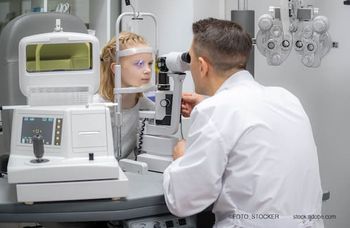
- Ophthalmology Times: January 2023
- Volume 48
- Issue 1
NIH scientists create eye tissue using 3D bioprinting
The technique could provide researchers with samples for studying AMD and other eye diseases.
Using patient cells and 3D bioprinting, a research team from the National Eye Institute (NEI), part of the National Institutes of Health (NIH), printed a combination of cells that make up the outer blood-retina barrier. The method could yield what, in theory, could turn out to be a limitless supply of patient-derived tissue to study degenerative retinal diseases such as age-related macular degeneration (AMD), according to an NIH news release.1
The NIH noted that the researchers used patient stem cells and 3D bioprinting to develop the eye tissues that will unlock some of the mysteries of blinding diseases. The study was published in Nature Methods.2
Kapil Bharti, PhD, who heads the NEI Section on Ocular and Stem Cell Translational Research, noted in the news release that researchers have learned that AMD begins in the outer blood-retina barrier. “However, mechanisms of AMD initiation and progression to advanced dry and wet stages remain poorly understood due to the lack of physiologically relevant human models,” Bharti said in the news release.1
The researchers noted in the news release that the outer blood-retina barrier is made up of the retinal pigment epithelium (RPE) and is divided by the Bruch membrane from the blood-vessel rich choriocapillaris. The NIH also noted in its release that Bharti and the research team put together 3 immature choroidal cell types in a hydrogel: pericytes and endothelial cells, primary components of capillaries; as well as fibroblasts, which give tissues a structure. According to the release, the team then used the 3D bioprinting technology to print the gel onto a biodegradable lattice, with the cells then starting to form a compact capillary network.
According to the NIH news release, by day 9, the team was able to seed retinal pigment epithelial cells on the flip side of the lattice, and the printed tissue was fully mature by day 42. Moreover, the news release noted that the researchers found that when subjected to stress, the printed tissue exhibited signs of early AMD, including drusen deposits underneath the RPE and progression to late dry stage AMD, with some tissue degradation seen.
“By printing cells, we’re facilitating the exchange of cellular cues that are necessary for normal outer blood-retina barrier anatomy," Bharti explained in the news release.1 “For example, presence of RPE cells induces gene expression changes in fibroblasts that contribute to the formation of [the] Bruch membrane—something that was suggested many years ago but wasn’t proven until our model.”
A key hurdle for the team, according to the news release, was developing an adequate biodegradable lattice and maintaining an even printing pattern. They achieved this with a temperature-sensitive hydrogel.
The NIH also noted in its news release that the project received an assist from coauthor Marc Ferrer, PhD, director of the 3D Tissue Bioprinting Laboratory at NIH’s National Center for Advancing Translational Sciences, and his team, who provided their expertise for the biofabrication of the outer blood-retina barrier tissues “in-a-well,” along with analytical measurements to enable drug screening.
“Our collaborative efforts have resulted in very relevant retina tissue models of degenerative eye diseases,” Ferrer said in the NIH news release.1 “Such tissue models have many potential uses in translational applications, including therapeutics development.”
References
1. NIH researchers use 3D bioprinting to create eye tissue. National Institutes of Health. Published December 22, 2022. https://www.nih.gov/news-events/news-releases/nih-researchers-use-3d-bioprinting-create-eye-tissue
2. Song MJ, Quinn R, Nguyen E, et al. Bioprinted 3D outer retina barrier uncovers RPE-dependent choroidal phenotype in advanced macular degeneration. Nat Methods. 2023;20:149-161. doi:10.1038/s41592-022-01701-1
Articles in this issue
over 2 years ago
The retina technology of tomorrow todayalmost 3 years ago
Study: Retina specialists gain awareness of biosimilarsalmost 3 years ago
Diagnosis and treatment: Manage dry eye with these tipsalmost 3 years ago
Glaucoma surgical device lowers IOP levelalmost 3 years ago
Individualized patient care increases adherence to glaucoma therapyalmost 3 years ago
XEN continues to evolve for use in glaucoma surgeryalmost 3 years ago
Lysyl oxidase augmentation a treatment option for thin corneasalmost 3 years ago
Keratoconus management: Lessons learned from an unusual timealmost 3 years ago
Ocular implants can be a gateway to better glaucoma careNewsletter
Don’t miss out—get Ophthalmology Times updates on the latest clinical advancements and expert interviews, straight to your inbox.


















































.png)


